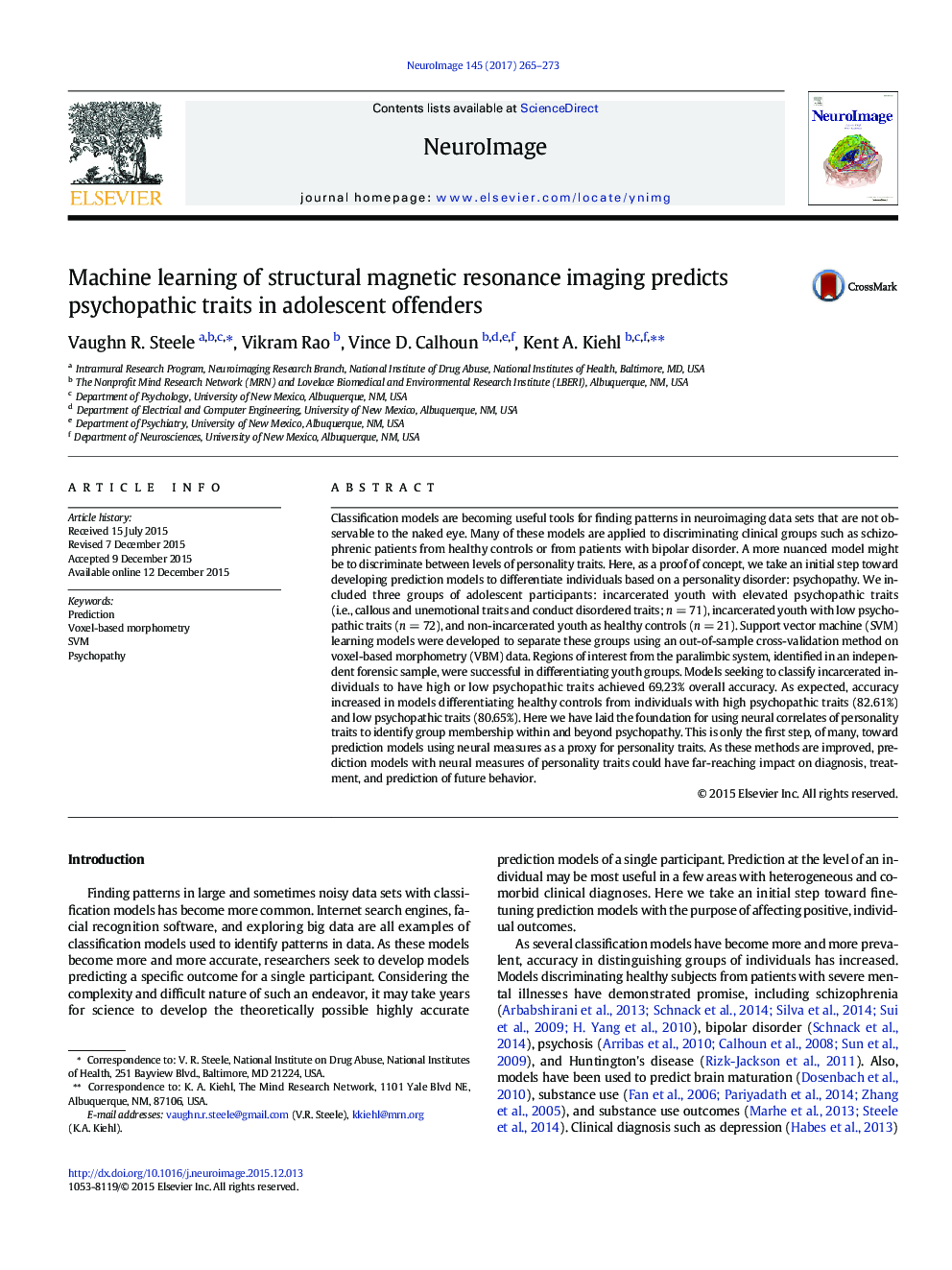| کد مقاله | کد نشریه | سال انتشار | مقاله انگلیسی | نسخه تمام متن |
|---|---|---|---|---|
| 5631578 | 1406499 | 2017 | 9 صفحه PDF | دانلود رایگان |
- SVM prediction models used neural correlates of a psychopathic traits.
- SVM of VBM differentiated individuals with and without elevated psychopathic traits.
- SVM of VBM differentiated individuals with psychopathic traits and healthy controls.
- Additional personality measures could be used to aid in diagnosis and treatment.
Classification models are becoming useful tools for finding patterns in neuroimaging data sets that are not observable to the naked eye. Many of these models are applied to discriminating clinical groups such as schizophrenic patients from healthy controls or from patients with bipolar disorder. A more nuanced model might be to discriminate between levels of personality traits. Here, as a proof of concept, we take an initial step toward developing prediction models to differentiate individuals based on a personality disorder: psychopathy. We included three groups of adolescent participants: incarcerated youth with elevated psychopathic traits (i.e., callous and unemotional traits and conduct disordered traits; n = 71), incarcerated youth with low psychopathic traits (n = 72), and non-incarcerated youth as healthy controls (n = 21). Support vector machine (SVM) learning models were developed to separate these groups using an out-of-sample cross-validation method on voxel-based morphometry (VBM) data. Regions of interest from the paralimbic system, identified in an independent forensic sample, were successful in differentiating youth groups. Models seeking to classify incarcerated individuals to have high or low psychopathic traits achieved 69.23% overall accuracy. As expected, accuracy increased in models differentiating healthy controls from individuals with high psychopathic traits (82.61%) and low psychopathic traits (80.65%). Here we have laid the foundation for using neural correlates of personality traits to identify group membership within and beyond psychopathy. This is only the first step, of many, toward prediction models using neural measures as a proxy for personality traits. As these methods are improved, prediction models with neural measures of personality traits could have far-reaching impact on diagnosis, treatment, and prediction of future behavior.
Journal: NeuroImage - Volume 145, Part B, 15 January 2017, Pages 265-273
